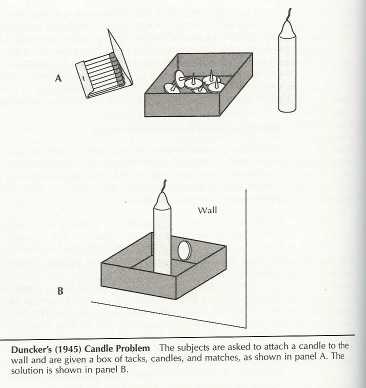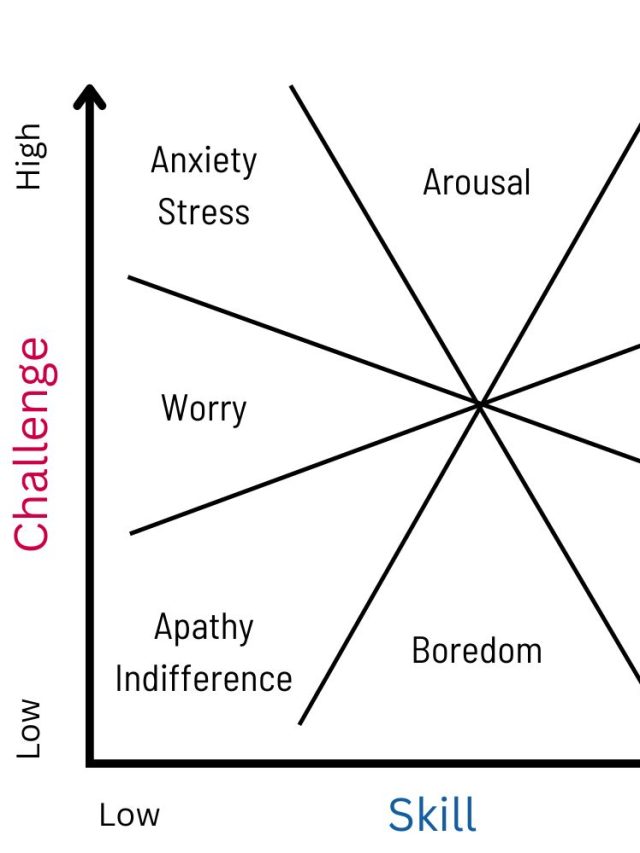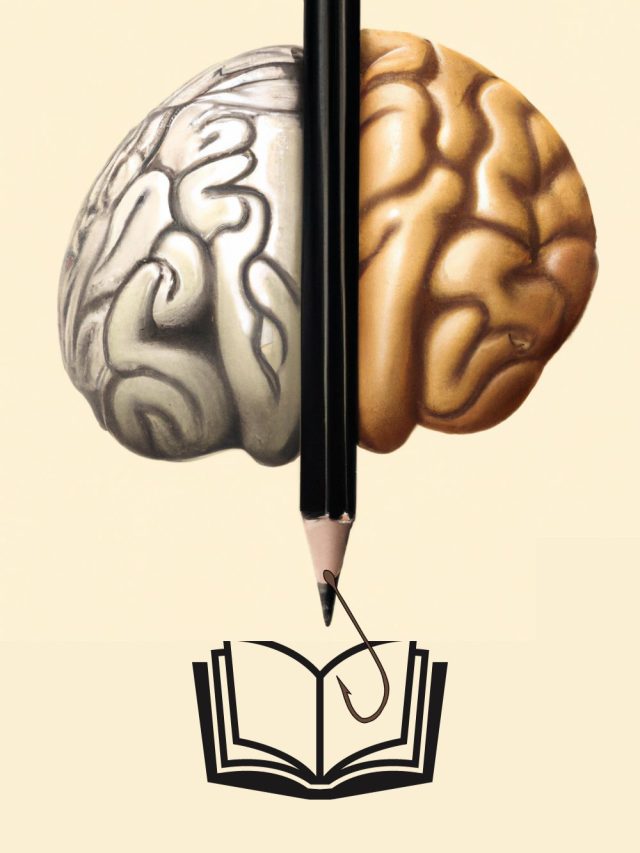Speaking anecdotally, have you ever had an interaction with a professional who has a vast amount of experience but ultimately failed to offer a smart and creative solution?
One possibility is that the expert really wasn’t an expert and genuinely lacked problem-solving skills.
The other possibility is that you experienced the Einstellung Effect; also known as the Problem-Solving Set. It clearly explains why gaining expertise in a domain can make you less creative at problem-solving. Not all experts are bad at creative problem solving but some do fall victim to the problem-solving set.
I like to look at it this way: The Einstellung Effect explains and describes how repeated practice and prior knowledge can become a hindrance to creative problem-solving. In a more nuanced sense, people tend to rely on existing cognitive structures (thought patterns) even when they are no longer useful or relevant, just through habit.
This was first empirically observed in 1942 by Luchins & Luchins. We’ll look into that experiment and zoom-in into the details soon. Before that, let us look at the word itself. Einstellung is German for Setting as well as Attitude.
I was fascinated with this concept because it is both obvious and counter-intuitive at the same time. One reason which makes it obvious is that we infer expertise via multiple channels – the success rate of doing something, years of experience, testimonials from people who’ve utilized a service, etc. These correlations (or modest predictors) are a safe bet to warrant the title of being an expert.
Why is it not intuitive? Because we often believe that expertise equates to breadth and depth of knowledge as well as skill, and one’s improvising capabilities in a particular domain. However, research shows that improvising, finding optimal solutions, and creative problem solving is hampered by gaining practiced expertise.
Part of the answer lies in what cognitive psychologists call a ‘set’. A set refers to a pattern of thinking which is fairly rigid because it predicts higher success for an outcome.
The presence of a familiar solution can block the discovery of better solutions. This is the Einstellung effect. Questioning your expertise can help overcome this. Click To TweetWhy should you care about the Einstellung effect?
Because, a number of decisions regarding money are made based on one’s perceived expertise. Experts normally charge more money (and vice versa, people who charge more are assumed to be experts). Understanding this effect will help you answer the question – Is it alright for you to pay for a creative problem? Is an expert a better choice than a novice (or even a baby)?
The Water Jar Experiment
Let us look at one of the first experiment which highlights that experts are less creative and less optimal in solving problems which slightly differ from what they are trained to solve.
Luchins and Luchins (1942) conducted an experiment called the ‘Water Jar Experiment[1]‘ in which people were given a very specific problem to solve: Find out how to measure a specific amount of water using 3 Water Jars with a unique and different capacity to hold water. Let’s say the 3 jars (A, B, & C) can hold (127, 21, & 3) units of water respectively and the participants had to measure 100 units of water using these Jars. The experimenters created 2 groups. The first group was given 5 practice problems and the second group was given no practice problems. Both groups were given 4 critical problems to understand their approach to solutions.
The first group’s 5 practice problems could be solved with only 1 exact solution – Put 127 units in Jar A, Remove 21 units by pouring it in Jar B, and then remove 2 instances of Jar C. This gives the expected solution of 100 units. The formula is straight forward A-B-2C.
When both groups solved the 4 critical problems, the first group tended to use the A-B-2C formula to solve a simpler problem – measure 18 units using Jars with a capacity of 39, 15, 3. While the formula worked in successfully solving the problem, a simpler solution existed which the other group used: B + C.
Among the 4 problems, there was an extinction problem – A problem which cannot be solved using the known formula. Participants from the first group failed the extinction problem which indicates that the Einstellung effect was present.
The experiment shows that practicing a certain method (having prior knowledge) put people in a mental set to answer newer problems with a known method than exploring simpler and novel solutions. People with no experience solved the problem more optimally than people with experience.
When Luchins and Luchins gave members of the first group a mental cue saying “Don’t be blind”, more members ended up using the optimal solution. This also shows that the Einstellung effect can vanish in the presence of priming.
Another classic creativity test demonstrates how the Einstellung effect can vanish with small changes to instructions or one’s attitude.
Non-experts, beginners, and inexperienced people can add more value in some problem-solving cases than experts. This can range from offering a fresh perspective to finding obvious solutions which experts miss. Click To TweetThe Candle Problem
You have a box and tacks, matches, and a candle. Find out how you can use these to place a lit candle on the board without letting the wax fall on the floor.

Karl Duncker observed that people often reach a roadblock in solving the candle problem because of the way the tools (box of tacks, match-sticks, and the candle) are presented. The optimal solution is depicted in the image above. However, people do try to overcome the unconscious functional use of the box w/o the tacks as a resource by using other creative (but sub-optimal solutions). Some people solved the problem by using the wax as an adherent between the candle and the board.
Glucksberg tackled this problem with more variations in the experiment[2] which generated some not-so-obvious conclusions. The researchers found that presenting the box of tacks separately as a box and a few tacks, made problem-solving easier. They also reported that increasing the monetary reward for those who would successfully solve the problem affected the subject’s problem-solving capacities. The ones who were given a box with tacks contained within and a chance to earn a higher amount of money performed worse than those who were offered lesser money. This is an interesting finding because it suggests that increasing a person’s drive to creatively solve a problem makes a person recruit stable and rigid habits because the stakes are high – evidence for past experience becoming a dominant method of solving a problem. A higher drive can prevent novel solutions when the stakes are high because past experience creates an illusion of imagined success.
Another variation[3] of the original candle experiment gives another unique insight. When the resources for the problem were given in writing with the keywords underlined, the chances of successful problem-solving increased. Presenting the resources as a box of tacks, matches, and a candle facilitated problem solving and presenting the same words without the underline did not (at least not as much).
This is a similar change to the original instruction as “don’t be blind” by Luchins and Luchins in the sense that it cues and primes a person to avail additional mental resources to act on new details (perceptual as well as semantic).
Functional Fixedness and Pre-utilization
A closely related concept is functional fixedness. When we gain experience and practice in solving a certain type of problem, we may experience function fixedness. Functional fixedness describes the rigidity in using a particular tool or resource in 1 single way when it can, technically, be used in many ways. For example, hammers are excellent for punching in nails. That’s what they are made for, i.e., their designed function is to affix nails. However, hammers can also be used as paperweights. Many movie theatres have a circular closed-bottom hole next to the seat which is designed to keep a cup. It can also be an excellent way to keep your phone in case you are afraid of letting it pop outside from your pocket. This is an example of overcoming functional fixedness – where an object is used in more ways than what it was originally designed for.
Research shows that children are probably immune to functional fixedness[4]. After all, they are the original non-experts. Their brains are regularly learning new functions and are in an exploratory state because there is almost no practiced experience to rely on.
Replication studies[5] using Duncker’s original experiments on functional fixedness (similar to the candle problem, where the box was pre-utilized as a container for tacks and not offered as a unique resource) show using a resource in a particular way in the past can promote functional fixedness.
These studies are in line with the Einstellung Effect – expertise and repeated formulaic practice can hamper creative problem-solving.
The Einstellung Effect is not just modulated by expertise. Research shows that positive affect[6] (good mood) can increase creative problem-solving.
What happens when someone is monitoring you while problem-solving? Workplace simulation research shows[7] that monitoring makes it more difficult for a person to find a pattern solution (a formulaic solution) and reduces the chances of successfully recognizing when a pattern solution fails to solve a problem.
Innovation and identifying creative opportunities is a part of entrepreneurship and researchers point out that the Einstellung Effect is negatively associated with business-related problem-solving.
Expert or no-expert, misdirection and planting false and unorthodox solutions[8] in one’s head can also block a person from finding an obvious solution. Can this be easily countered? Turn’s out it can’t. In the study, researchers found that once a false solution is in awareness, it becomes harder to even look for and discover alternative solutions.
Findings which make the Einstellung Effect complex
When people are given 2 problems which are similar in structure and not in surface level features, experts are more likely than novices to demonstrate a positive transfer effect of problem-solving. That means experts are more likely to successfully solve a similar problem if they have expertise in solving similarly structured problems. On the other hand, novices are more likely to experience a negative transfer (failing to solve new problems) when they have experience with problems which are similar on the surface but structurally different.
A hidden aspect of this finding[9] is that experts may be able to process a problem at a more abstract level and ignore the influence of surface level features and novices might be lacking the sensitivity to understand the influence of underlying structures while solving problems.
This makes the Einstellung effect complex.
Research shows[10] that as expertise increases, people are less prone to the Einstellung effect. In their experiment, chess players were given opportunities to use optimal but unfamiliar and sub-optimal but familiar solutions. Using familiar solutions induced the Einstellung effect even in experts. The experimenters concluded that the blocking effects of prior learning and mental inflexibility can be present or not present. There is no single unidirectional conclusion. The level of expertise matters in predicting how likely people are to adopt rigid sub-optimal solutions or novel and optimal solutions.
In another experiment which tracked eye-movements[11] of expert and novice chess players, researchers found that the Einstellung effect was present but some experts could gradually disengage from it if the made a non-Einstellung (optimal) choice beforehand. To further complicate the issue of expertise, experts and novices could both ignore the familiar but sub-optimal move when it was a ‘blunder’; in chess terms, that’s a grave mistake. Expert chess players reported[12] that they were looking for the most optimal solution (which is favorable in any chess game) but their eye-movement patterns did not indicate that. Researchers propose that this may be due to confirmation bias in attending to familiar information.
You can read more about the confirmation bias here and how to overcome it. Read it because the confirmation bias is pervasive and no one is immune to it.
The first idea which comes to mind may be sub-optimal and it can prevent the emergence of newer and better ideas. This is due to the influence of familiar problems and previous experiences – The Einstellung Effect Click To TweetWhen it comes to creativity and creative problem solving, disengaging from the world by looking at nothing, or even blinking, can help[13]. Researchers argue that looking at nothing can facilitate an internal activation of information which is dynamic than constraints presented by external factors which are static. A number of processes take place in the brain while learning and thinking, here are some of them which facilitate learning unconsciously.
There can be a number of ways in which the Einstellung Effect manifests, some of the most supported reasons are:
- Previous knowledge leads to prioritizing an acceptable success-rate over the most optimal solution. If it works, why improve it! Amirite? (No)
- Expertise leads to a large amount of automatic habit activation which is linked to tested protocols.
- Learning and training isn’t diverse enough to stumble-upon
- Details in the utilization of cognitive structures pays the price of inhibiting related resources which do not predict an imagined solution.
- Neural plasticity for cognitive structures is strengthened through repeated using of a solution making it less resource-demanding and more accessible; whereas, synaptic connections for other cognitive processes, which aid problem solving, are weakened or inhibited over time.
- The Hebbian principle of ‘what fires together wires’ together can facilitate more confidence in a tested approach to a solution (an expert’s specialty) because the solution is linked to success, proof-of-concept, and validation of expertise.
- A variant of the confirmation bias may become a go-to heuristic to attend to information that fits prior knowledge.
So what is the takeaway?
- A change in mindset and reimagining the use of resources can help to overcome functional fixedness and promote creative problem-solving.
- Experts and Non-experts are both, to an extent, not immune to the Einstellung Effect.
- The level of expertise predicts Einstellung effects non-linearly. That means, to a certain point, you’ll find that creative problem solving is lacking. But, as the expertise grows, it gets easier to recover from it and assess a problem uniquely at an abstract level.
- Sometimes, it is better to appoint a non-expert than an expert to solve a problem because of the Einstellung Effect. This decision can be based on a number of factors such as the cost of expertise, the stakes put on the solution.
- Expertise does not clearly predict flexibility in problem-solving and creativity. It is possible that mental flexibility is based on a number of other factors such as variation in training, implicit learning capacities, one’s attitude, motivation, rewards, and explicit changes in cues, etc.
- It is easy to recover from the Einstellung Effect by just changing the nature of the ‘givens’ in a problem-space.
- Question the validity of an expert’s solution (politely).
- Not all experts demonstrate the Einstellung Effect. Remember: Expertise and Einstellung-ness has a non-linear relationship.
Sources
[2]: https://psycnet.apa.org/record/1963-00469-001
[3]: http://web.stanford.edu/~mcfrank/papers/old/dualist.pdf
[4]: https://link.springer.com/article/10.3758/BF03213010
[5]: https://psycnet.apa.org/record/1953-04914-001
[6]: https://psycnet.apa.org/doiLanding?doi=10.1037%2F0022-3514.52.6.1122
[7]: https://www.tandfonline.com/doi/abs/10.1080/00224545.2017.1324396
[8]: https://www.sciencedirect.com/science/article/pii/S0010027716301494
[9]: https://www.ncbi.nlm.nih.gov/pubmed/2969945
[10]: https://www.sciencedirect.com/science/article/pii/S0010028507000102
[11]: https://journals.plos.org/plosone/article?id=10.1371/journal.pone.0075796
[12]: https://www.ncbi.nlm.nih.gov/pubmed/18565505
[13]: https://www.ncbi.nlm.nih.gov/pubmed/26913018

Hey! Thank you for reading; hope you enjoyed the article. I run Cognition Today to paint a holistic picture of psychology. My content here is referenced and featured in NY Times, Forbes, CNET, Entrepreneur, Lifehacker, 10-15 books, academic courses, and research papers.
I’m a full-time psychology blogger, part-time Edtech and cyberpsychology consultant, guitar trainer, and also overtime impostor. I’ve studied at NIMHANS Bangalore (positive psychology), Savitribai Phule Pune University (clinical psychology), and IIM Ahmedabad (marketing psychology).
I’m based in Pune, India. Love sci-fi, horror media; Love rock, metal, synthwave, and pop music; can’t whistle; can play 2 guitars at a time.











Aditya,
Excellent article.
Often, I ask a simple question during a job interview. The question is as follows.
I have 5 pairs of white socks, 5 pairs of red socks, and 5 pairs of blue socks. I have mixed all up and put it in a box. Now every day, I draw one sock at a time. When I have a pair of same color socks, I wear them and walk out. What is the smallest number of socks I need to draw so that it is guaranteed that I will have a pair of same color socks? Of course, 2 is not the answer even if you happen to be lucky. I need a guarantee.
Although straight forward, candidates start using probability theory, permutation combination, etc. It is all due to the Einstellung effect. That’s the term I learned today!
Thank you so much Dr. Vinay! Is the answer 4? Worst case scenario, the first 3 choices are different. Then the 4th sock has to match at least one other!
This is a great example of catching someone stuck with the Einstellung effect!